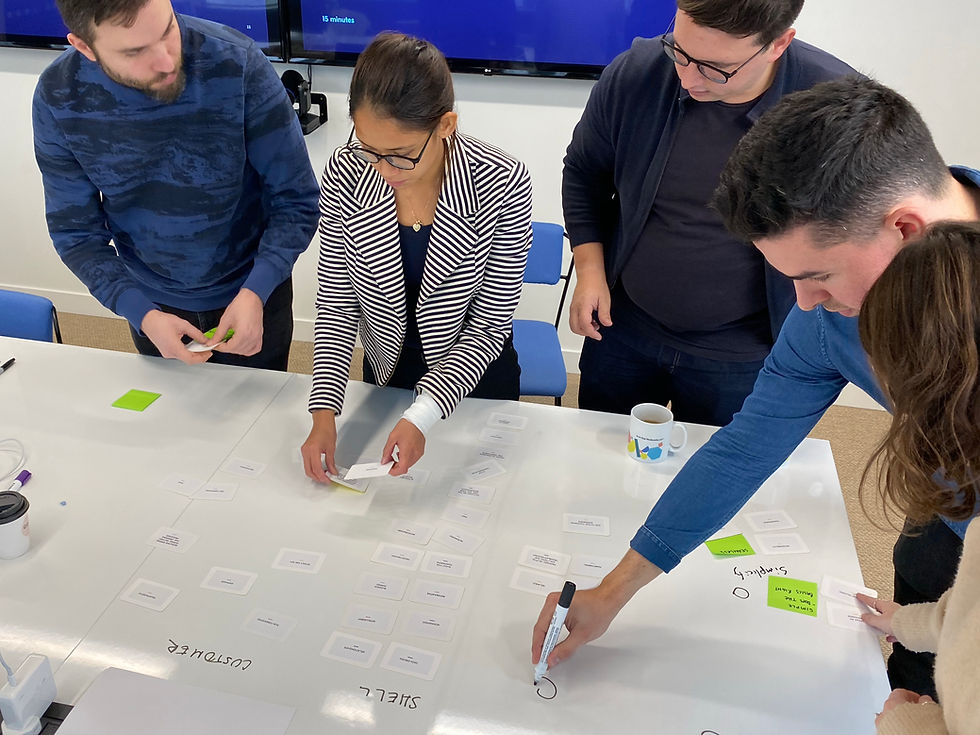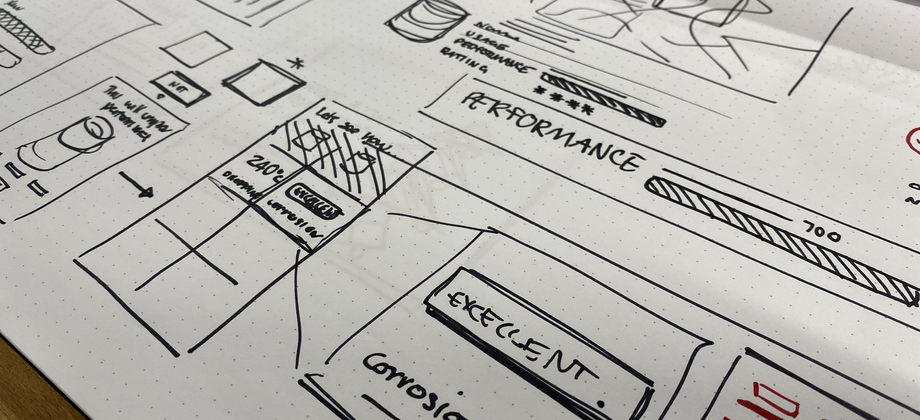
Manages your day to day industrial operations and performance, allows your business to track, analyse and improve your site management
Shell MarketHub
Overview
Shell were looking to transform their commerce platform used by their B2B customers within industrial Lubricants. We were given the scope to create key user journeys of what MarketHub 2.0 could look outside the core ordering journey. We analysed the existing fragmented Shell product ecosystem and created a future vision for what the commerce experience could look like for customers. We focused on providing value for customers and the business in that would further enable MarketHub to become a market leader in full site maintenance and operational logistics.
Role
- Workshop Facilitation
- UX/UI Design
- Prototyping
- User Testing
- Storyboarding
Duration
3 months
The challenge
Looking outside of the core ordering journey that was already being developed by Shells internal agilehub team, we were given three main areas to focus on onboarding, engagement and loyalty. These areas were outside of Shell's MVJ's and would accompany their development for the initial launch of MVP to the Indian target market.
• Shell offer over 25 digital products and services for customers lubricants, there is no single experience or clarity of which products should be used to help customers businesses
• A complex onboarding process leaves users reliant on contacting customer service and their account managers to complete this, increasing the cost to serve
• To demonstrate the potential to help improve customers business operations outside of ordering, assisting in machine tracking, smart purchasing, seamless communication to help stakeholders see the potential of MarketHub
Workshops
We ran collaborative workshops with Shell stakeholders in order to align on the brief and challenge any areas that we feel we can create more value for the client and the user. We ran through a combination of strategic and explorative based exercises to really empathise with the target users and understand holistically what were will be looking to create.
We had four full days of workshops with the clients which is part of our C2C approach, the following exercises were covered:
Strategy
- Hopes and fears
- Stakeholder mapping
- KPI's
- Guiding goals




Design
- Empathy mapping
- As-Is experience mapping
- Product review
- Design principles
- Priortisation matrix (User vs Business value)
Findings & Direction
The main findings that came from the workshops was to understand the users and their current frustrations, and how we would look to solve these alongside meeting the business levers set by Shell to deem the MarketHub 2.0 a success. We created a list of opportunities which we prioritised as a group in order to understand our direction for the design and development stage.
• Integration within the Shell product ecosystem was key and by combing the existing product range into two standalone areas it would help create a seamless user experience.
• There was a clear lack of strategy around pushing premium products
• To increase user engagement by offering a larger service to customers for vehicle /machine monitoring, servicing activities and introducing automation into the buying journeys
• To create a rewards programme to help power the use of MarketHub and improve customer retention
Personas
We explored and validated personas for a maintenance engineer, shell account manager and a business owner. Discovering that the Account manager is an integral part of the prospecting process and maintains very close relationships with customers throughout. Shell had already looked into the procurement manager who is the main MH user but we saw value in exploring these personas to see where MH can bring additional value.




Experience Mapping
Walking through the As-is experience with the user research team to understand each step of the engineers and account managers day, looking at the main stages outside of ordering where functionality could be added during the customer setup, monitoring and site management areas.




Experience Principles
We ran a card sorting exercise during the initial workshops to create a set of principles that would guide the design and development of our work and the Shell team. We began with 80 principles that were streamlined down through a series of grouping tasks to six main areas which we defined and played back to the client, Shell will be using these principles throughout their development of MVP.

User Flows & Ecosystem Audit
Starting to understand the journeys in more detail, creating user flows to create a clear journey for each concept that was to be developed. These assets were validated with the stakeholders in order to gain key feedback early on to ensure we were aligned as a team.




Wireframes
Developing the user flows into fully fledged concepts through initial sketches to playback to the internal team to ensure we were all aware of the design direction before moving onto digital wireframes.
Usability Testing
I conducted testing with a range of lead maintenance engineers to understand that our prototypes and direction was on the right track. Sessions covered the user onboarding, product up-sell, machine service request. Taking qualitative feedback and metrics around satisfaction and a task success rates.
10
Primary Users
(Lead engineers, General managers)
4.1
Avg Satisfaction
(Useful, intuitive, efficient)
90%
Avg Success Rate
(Onboarding: 100% / Product up-sell: 90%
Service check: 70% / Loyalty: 100% )
Further Findings
• GM's wanted to allow their lead engineers the permission to update products contractually
• Engineers have a multitude of daily tasks, if a machine service check request is sent through they need to be able to add comments on when this can be completed, add context
• Talking to a Shell technical advisor would be a helpful on a regular basis for queries outside of certain products

Design
Working closely with the visual designer to bring the main features of the wireframes to life as focal points for further interaction animations that would be included in the final video.
Interaction design
Interactions were considered to assist the user through journeys in selected journeys, in the onboarding flow it was key to show progress indication of the journey and animated that section accordingly. This allows the user full transparency on their progress and the duration left to complete the task, assisted with clear and concise copy throughout. These interactions were further brought to life in the final video to give a real look and feel of the final product.
Project Milestones
We created six design concepts in total which are displayed across a variety of devices due to the holistic approach we took to add value through different use cases in the work place. We wanted to demonstrate how MarketHub is more than an ordering platform but once connected seamlessly by API's into Shells SolutionHub application we can create a single area for users to visit and service their needs.
-
Reduced onboarding timespan from 2-3 weeks to 1 day, users can setup permissions autonomously
-
Simplified the fragmented digital landscape through incorporating features into two main platforms, improving initial pre sign up experience to inform new customers on MH
-
Reinforced a clear design language across all digital products underpinned by the experience principles
-
Reduced cost to serve through by allowing customers to self serve (remote/virtual assistance)
Journey
Pre-signup - Potential Customer
Scenario
A potential customer is surveying Shells current offering and is taken to MarketHub overview to view in more detail.
Design principles
Connected, Simplicity, Trust
Journey
User onboarding - Business owner
Scenario
The business owner has agreed and signed their first contract with Shell through their nominated account manager, the user receives an email shortly after as the first touchpoint for becoming a Shell customer.
Design principles
Data-driven, Supported, Simplicity
Journey
Product Up-sell - Lead Engineer
Scenario
The engineer receives an up-sell notification for a new premium product.
Design principles
Data-driven, Supported, Connected
Journey
Machine service check - Lead Engineer
Scenario
The engineer checks their tasks set for the day and log onto SolutionHub to check their machines where they find an issue.
Design principles
Trust, Future-proof, Data-driven
Journey
Rewards Overview - Lead Engineer / GM
Scenario
User is onboarded to the new Shell rewards programme and explores features
Main takeaways
The challenge was to give the Shell Agilehub team value and a north star vision outside of their MVJ's in order to gain additional funding to take MarketHub to the next level. The potential opportunities that we identified put the Agilehub team in strong position for the next stage of internal funding.
• To spend time synthesising research in order to truly understand the problems users face
• Exploring Shells existing products unlocked insights into ways to consolidate the customer offering
• Pushing technology integration and features outside of ordering can further secure Shell as a market leader in lubricants and e-commerce downstream














